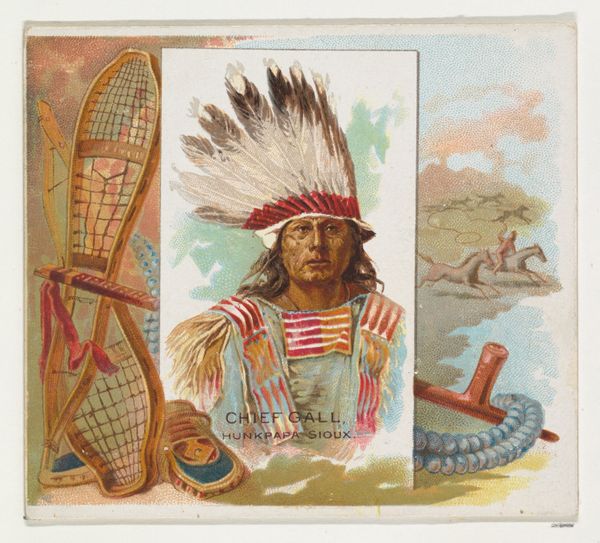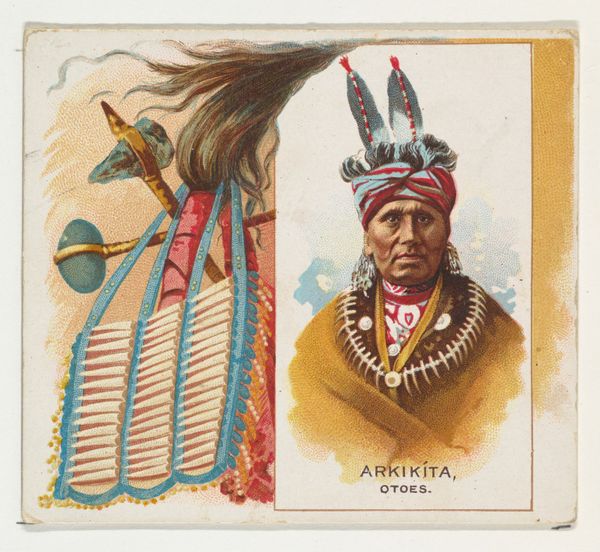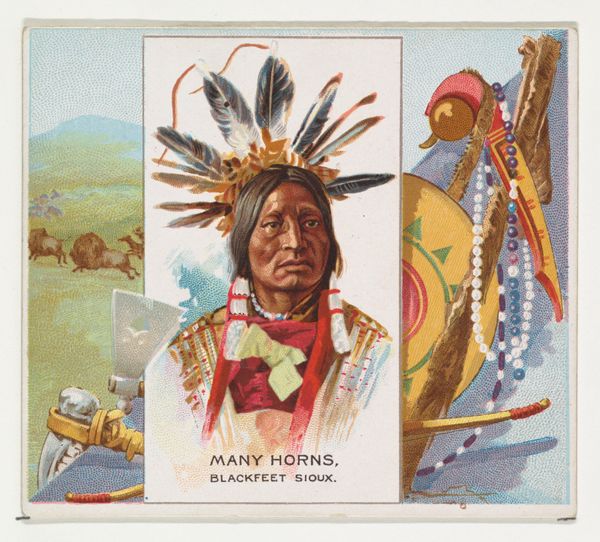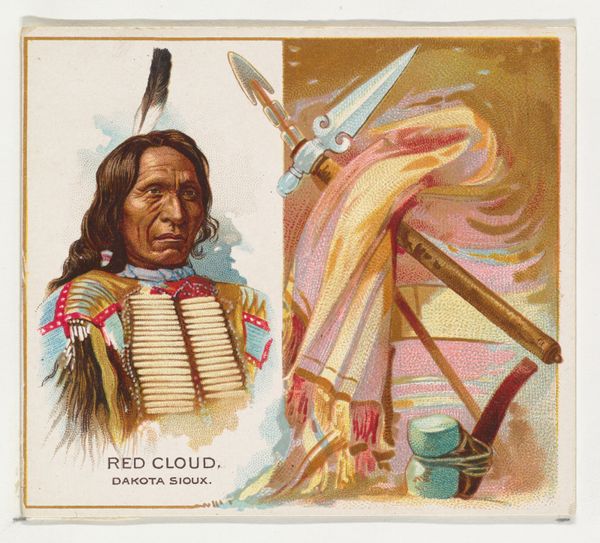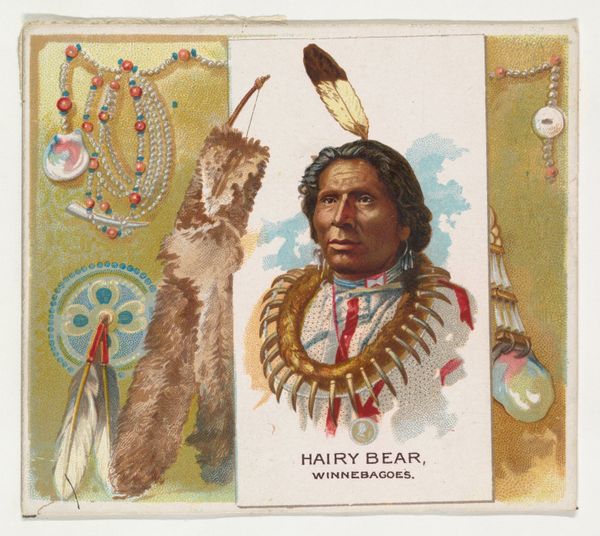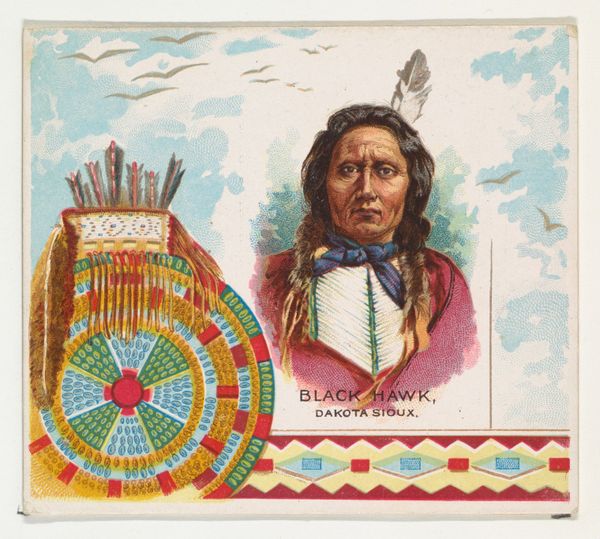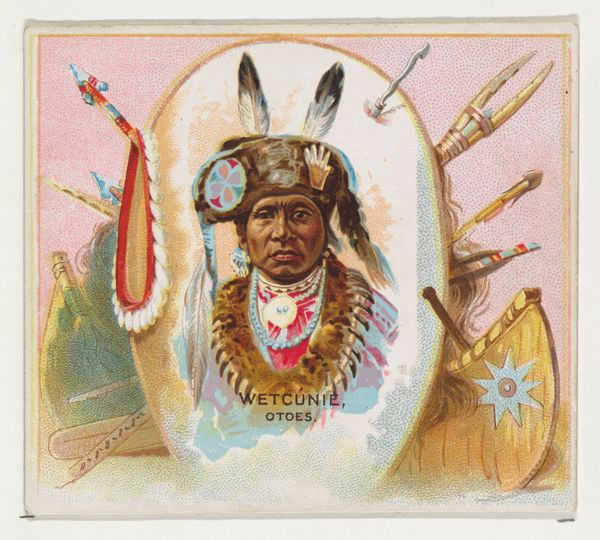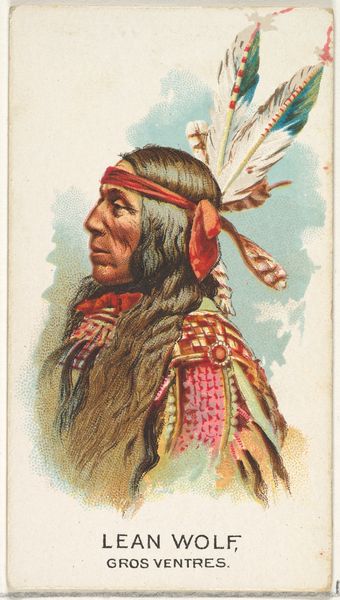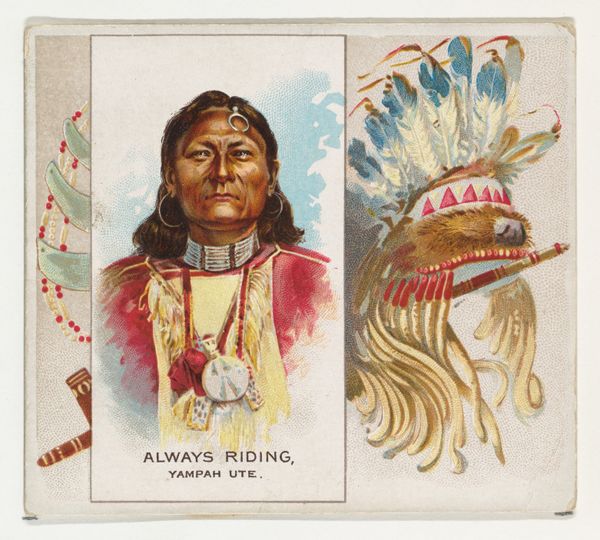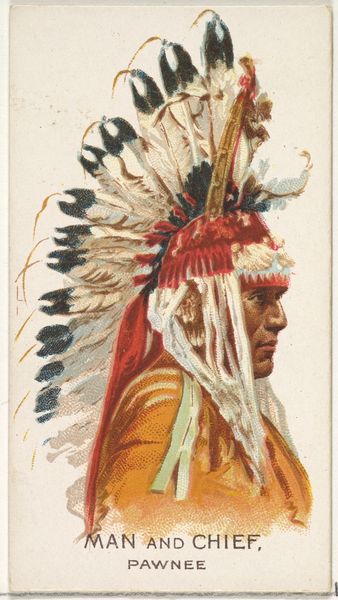
Rushing Bear, Pawnee, from the American Indian Chiefs series (N36) for Allen & Ginter Cigarettes 1888
0:00
0:00
drawing, coloured-pencil, print, acrylic-paint
#
portrait
#
drawing
#
coloured-pencil
#
water colours
# print
#
acrylic-paint
#
coloured pencil
#
history-painting
#
realism
Dimensions: Sheet: 2 7/8 x 3 1/4 in. (7.3 x 8.3 cm)
Copyright: Public Domain
Editor: Here we have "Rushing Bear, Pawnee," a print from 1888 by Allen & Ginter, part of their American Indian Chiefs series. It's a fascinating image – quite compact, with lots of details crammed in. There's almost a sense of... exoticism to it, like a trading card depicting a far-off land. What strikes you most about this piece? Curator: The exoticism you noticed is key. These cards weren't about celebrating Native culture, but about commodifying and consuming it. They present a romanticized, flattened view of Indigenous identity to sell cigarettes. We need to examine who created this image, and for what purpose, before considering it. What power dynamics are at play here? Editor: That makes sense. So, even though it's called a "portrait," it's not necessarily a true representation? Curator: Exactly. The composition—the isolated figure, the surrounding objects—fuels that romanticized distance. It separates Rushing Bear from his context and reduces him to an object of curiosity. Consider how the inclusion of items like snowshoes and the peace pipe contribute to a pre-conceived image of "Indianness," stripped from its complexities. Editor: So the artist is reinforcing existing stereotypes through these carefully chosen symbols. The gaze of Rushing Bear appears piercing, a sort of clash between that exoticism and a dignified sitter. Curator: Precisely. His expression, read alongside the history, opens a crucial dialogue: Whose story is being told, and at whose expense? How might we reclaim this image by situating it within a wider narrative of colonialism and resistance? We can ask ourselves, whose perspective matters most here? Editor: That's given me a completely new way to look at what seems like a simple image. Thanks for highlighting the complex social and historical layers at play. Curator: My pleasure. Art is never created in a vacuum, and interrogating these power dynamics allows us to engage with the artwork, and history, in a much deeper way.
Comments
No comments
Be the first to comment and join the conversation on the ultimate creative platform.
